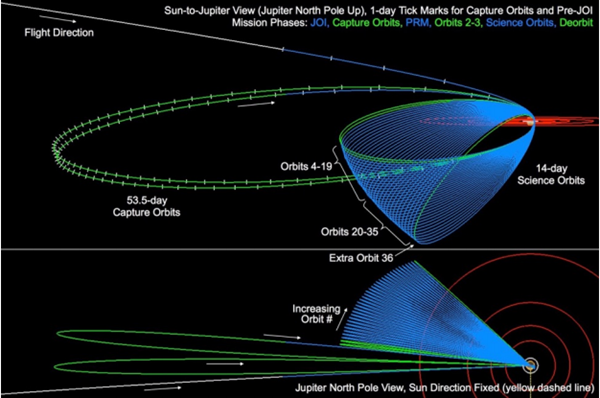Juno is headed toward an encounter Monday with Jupiter, when the fastest spacecraft ever will take a dangerous plunge about 2,900 miles (4,667 kilometers) above the surface of Jupiter. While the deep gravity well of Jupiter will help to grab onto the craft, it will still have to do some maneuvering to get into place.
At 10:18 p.m. CT on Monday night, the Juno craft will begin a 35-minute engine firing as it approaches the north pole of the planet. This will take place at closest approach when gravity is strongest. The craft, which is moving at 165,000 mph (265,541.76 km/h) toward Jupiter, will slow down by 1,212 mph (542 meters/s).
This should be enough to capture Juno into a 53-day orbit around Jupiter. It will make four orbits like this before firing off its rockets in October for a delta-v burn of 350m/s over 22 minutes that duration to draw it into an eventual 14 day orbit around Jupiter, though still an eccentric one.
In order to ensure success, Juno controllers have shut down all of the craft’s instruments and disabling some of the its failsafes during the most critical phases. This should ensure that the engines fire when instructed and deliver the craft into orbit around Jupiter, as it will only have one chance to make orbit. If it fails, it will sail off into the far reaches of the solar system.
After 50 hours, mission controllers will turn the instruments back on, and Juno’s main science objectives will begin.










